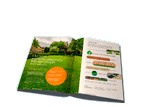Garden Prep for Changing Seasons
Posted on 18/09/2024
Gardening is a joyful and fulfilling activity that provides us with seasonal bounties. However, an important aspect of gardening is preparing for the changing seasons. As the weather shifts, so must your garden's care. This article covers comprehensive tips to ensure that your garden thrives year-round.
Understanding Your Garden's Needs Through the Seasons
Each season presents unique challenges and opportunities for your garden. By understanding what your plants and soil require during different times of the year, you can maintain a healthy and vibrant garden.

Spring: Awakening Your Garden
Spring is often considered the busiest season for gardeners. Here's how to prepare your garden for its most productive time:
1. Clean Up and Repair
- Remove any dead plant matter, fallen leaves, and debris from your garden beds.
- Inspect garden structures, such as trellises and fences, for any winter damage and repair as necessary.
2. Soil Preparation
- Check the soil's condition and add compost to enrich it, enhancing its fertility.
- Consider performing a soil test to determine pH levels and nutrient content. Adjust the soil as needed to meet the specific needs of your plants.
3. Seeding and Planting
- Start seeds indoors for vegetables and flowers that require a longer growing period.
- Transplant seedlings once the last frost date has passed and the soil has warmed up.
Summer: Maintaining Growth and Health
Summer brings warmth and abundant growth but also demands diligent care:
1. Watering Solutions
- Water deeply and less frequently to encourage deep root growth.
- Use mulch to retain soil moisture and control weeds, keeping the soil cool and moist.
2. Pest and Disease Control
- Monitor your plants regularly for diseases and pests. Employ organic and chemical treatments as required.
- Encourage beneficial insects, such as ladybugs and lacewings, by planting companion plants that attract them.
3. Pruning and Deadheading
- Regularly prune and deadhead plants to promote new growth and extend the blooming period.
- Keep an eye on the growth of vines and bushes, and trim them back to maintain their shape and health.
Fall: Preparing for Rest
Fall is the time to prepare your garden for its winter rest, ensuring it is ready to come alive again in spring:
1. Harvesting and Clearing
- Harvest the remaining vegetables and fruits before the first frost.
- Remove any dead or diseased plants to prevent the spread of pathogens.
2. Soil Amendment
- Add compost or well-rotted manure to garden beds, enhancing soil fertility and structure.
- Consider planting cover crops, such as clover or rye, to enrich the soil and prevent erosion.
3. Protecting and Insulating
- Apply mulch around perennials to insulate the roots and protect them from freezing temperatures.
- Wrap young or sensitive plants with burlap or use row covers to shield them from frost.
Winter: Rest and Planning
Winter may seem like a quiet period, but it's important for rejuvenation and future planning:
1. Equipment Maintenance
- Clean and store gardening tools properly to prevent rust and damage.
- Sharpen blades and perform any necessary maintenance on tools and equipment.
2. Planning for Next Season
- Reflect on the previous gardening season. Note what worked well and what didn't.
- Plan your garden layout, selecting new plants to try and rotating crops to maintain soil health.
3. Indoor Gardening
- Consider growing herbs or small vegetables indoors using containers or hydroponic systems.
- Maintain houseplants by ensuring they receive adequate lighting and humidity.

Year-Round Tips for a Thriving Garden
Regardless of the season, there are some universal tips to follow to ensure your garden remains healthy and productive:
1. Regular Monitoring
- Frequently inspect your garden for signs of stress, pests, or disease.
- Promptly address any issues that arise to prevent them from escalating.
2. Soil Health
- Continuously monitor and amend your soil to maintain its fertility and structure.
- Use organic matter and mulches to improve soil health naturally.
3. Sustainable Practices
- Practice crop rotation and diversification to enhance soil health and prevent pest infestations.
- Use water-saving techniques, such as drip irrigation and rainwater harvesting.
Conclusion
Preparing your garden for changing seasons is a vital component of successful gardening. By understanding the specific needs of your garden throughout the year and implementing the tips provided, you can ensure that your garden remains healthy and productive, regardless of the season. Whether you're cleaning up in spring, maintaining growth in summer, prepping for rest in fall, or planning in winter, each step is crucial for your garden's cycle of life. Happy gardening!






 Certified and experienced landscapers
Certified and experienced landscapers



 Get a Quote
Get a Quote